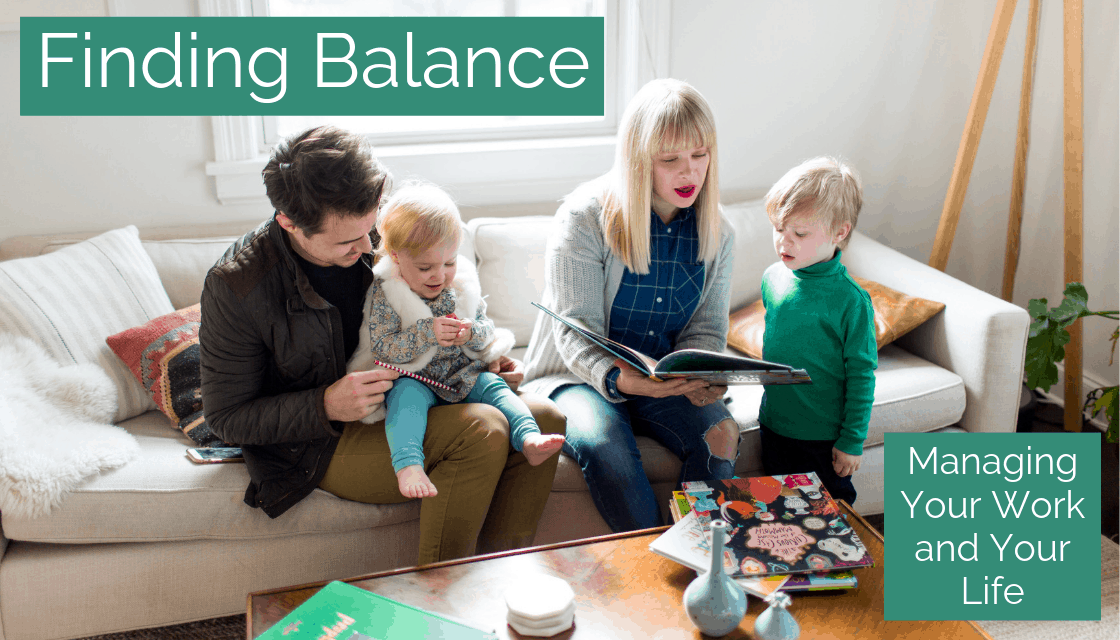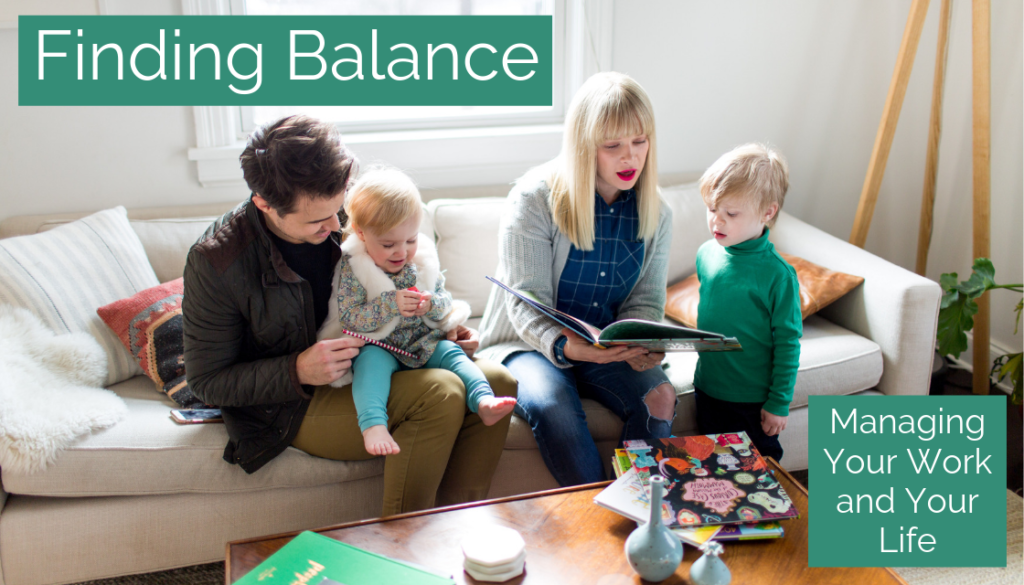
16 Jul Finding Balance: Managing Your Work and Your Life

Flashback to 2015.
I’d just started as a consultant with Usborne Books & More. I was working around the clock to achieve my goals and climb the promotion ladder. I was putting my job first and my personal life consequently took a backseat.
And guess what? It wasn’t long before I began burning out.
Sure, there were some benefits to prioritizing work, such as increased income and company recognition.
That said, there were a heck of a lot of downsides too.
Not only did I start to resent my job, but my loved ones began to have a negative impression of my career too.
I felt guilty that my family was not getting the best of me, my brain was frazzled all the time, and my health ended up suffering because I wasn’t allocating enough time in my schedule for self-care, exercise, and positive lifestyle choices.
Needless to say, something had to change.
I woke up one morning, tired and drained before I’d even started my working day. That’s when I realized that I had to put an end to the chaos. I had to get my personal life back on track. I had to learn to balance life and work for the sake of my well-being.
Even though it was a long road to recovery (and one that I still find myself walking from time to time), I’m a lot further along in my journey. Hence, I’ve decided to share my wisdom with you all to prevent you from making my past mistakes.
Define the Lines
Admittedly, defining the lines between your job and personal life is super hard to do when you work from home (and you have children).
At the beginning of my journey, I attempted to set “office hours.” However, I soon discovered that my life wasn’t really structured enough to stick to them.
The solution? Setting “anti-office hours.” These are the times that I’m determined NOT to work unless it’s absolutely necessary, such as:
- In the morning, before the kids are at school
- From the time that the kids come home from school until the time that they go to bed (unless I have a pre-planned work event or obligation)
- Any time that I’m having dinner, coffee, or hanging out with a friend or family member
And do you know what? This system works perfectly for me. Rather than forcing my workload into set hours, I make sure it doesn’t overflow into the hours I’ve set aside NOT to work.
Prioritize With Master Lists
Do you find that the time goes incredibly quickly when you just go with the flow, work on whichever task you feel like, and fail to plan your day? Because I do.
It’s so tempting just to fire up your computer, open your email inbox, and dive in headfirst—right? However, I personally find that these days are never as productive as I want them to be. I always get swept up in the task that’s in front of my face instead of accomplishing what I really need to.
Listen up, because I’m about to let you in on a little secret: taking 15 minutes in the morning to plan your workday is LIFE-CHANGING.
I use my 15-minute window to go over the master lists of tasks that I need to accomplish. You can create and keep separate lists for your job, personal life, family, etc. and then spend a few minutes prioritizing what needs to get accomplished that day. Hover over any task you have deemed priority and use the “snooze” feature to assign it to your current day.
For instance, I have three lists that I give an equal amount of attention to when it comes to organizing the world of Katy:
- Artful Agenda
- Usborne Books & More
- Life/Family
The result? Well planned out days that allow maximum productivity. Win-win.
Work in Time Blocks
Ever heard of time blocking? If not, then I’m about to blow your mind.
A method made popular by the billionaire founder and CEO of Tesla and SpaceX, time blocking involves pre-planning your day in 15-30 minute increments or “time blocks.” A specific task or activity is then assigned to each of these time blocks for optimal efficiency.
I tried it out for myself and found out that my most productive days were the ones where I analyzed the tasks that need to be ticked off the list and then scheduled them into time blocks.
Time blocking sounds super simple, I know, but there’s something about giving yourself a time limit for a certain activity that makes you complete it faster.
And if the billionaires are using this method? I’m in.
Use Separate Calendars
Just like I have separate master lists to organize my life, I also have separate calendars.
Why? Well, they allow me to see how much of my time I’m dedicating to each area, which helps me to maintain a healthy work-life balance.
For example, you can find the ones that I personally use below:
- Main calendar (for all the important events I must remember, whether they’re related to work or my home life)
- Work schedule (consisting of time-blocking)
- Family schedule (outlining time with friends and family)
- Usborne Books & More (for anything with my book business)
- Kris Allen’s calendar (so that I can coordinate appointments with the schedule of my touring musician husband)
When everything is organized and color-coded according to their calendar, I can see where I’m spending the majority of my time at a glance.
Realizing the Importance of a Work-Life Balance
Are you an all-or-nothing kind of person? Do you constantly set your mind on career goals and work relentlessly until you achieve them? Does your ambition sometimes have a detrimental effect on your personal life?
If you answered yes to these questions, then you sound like me pre-burnout.
It’s time to slow down. Before pushing yourself too far, realize how unbalanced your work-life ratio is and recalibrate the scale.
The good news is that you can rectify your situation. And fast. All you have to do is take the time to put the above measures in place to stop yourself from blurring the lines. And spoiler alert: it won’t be long before you’re living a happier and healthier life.
Don’t have an Artful Agenda account?



No Comments